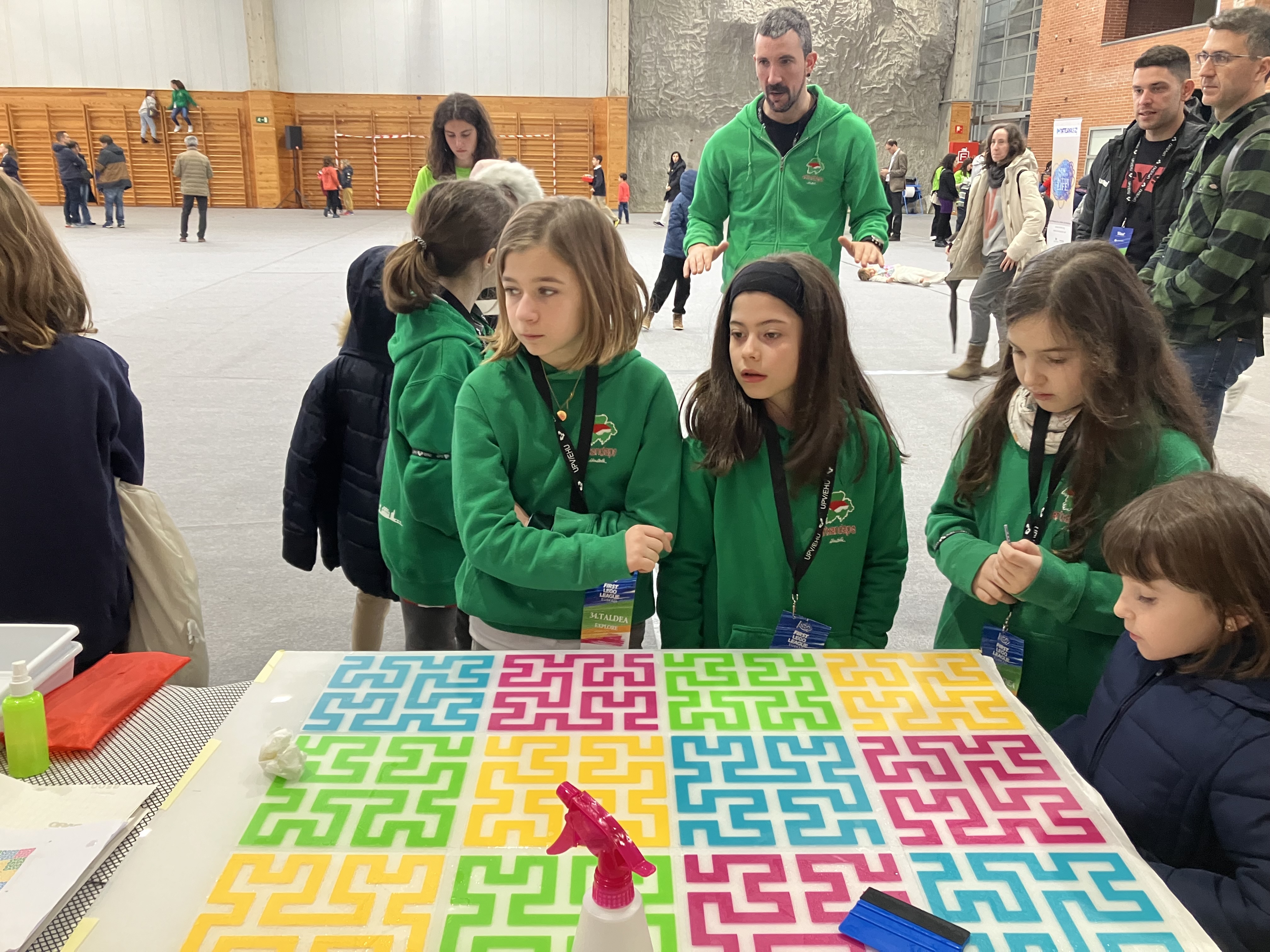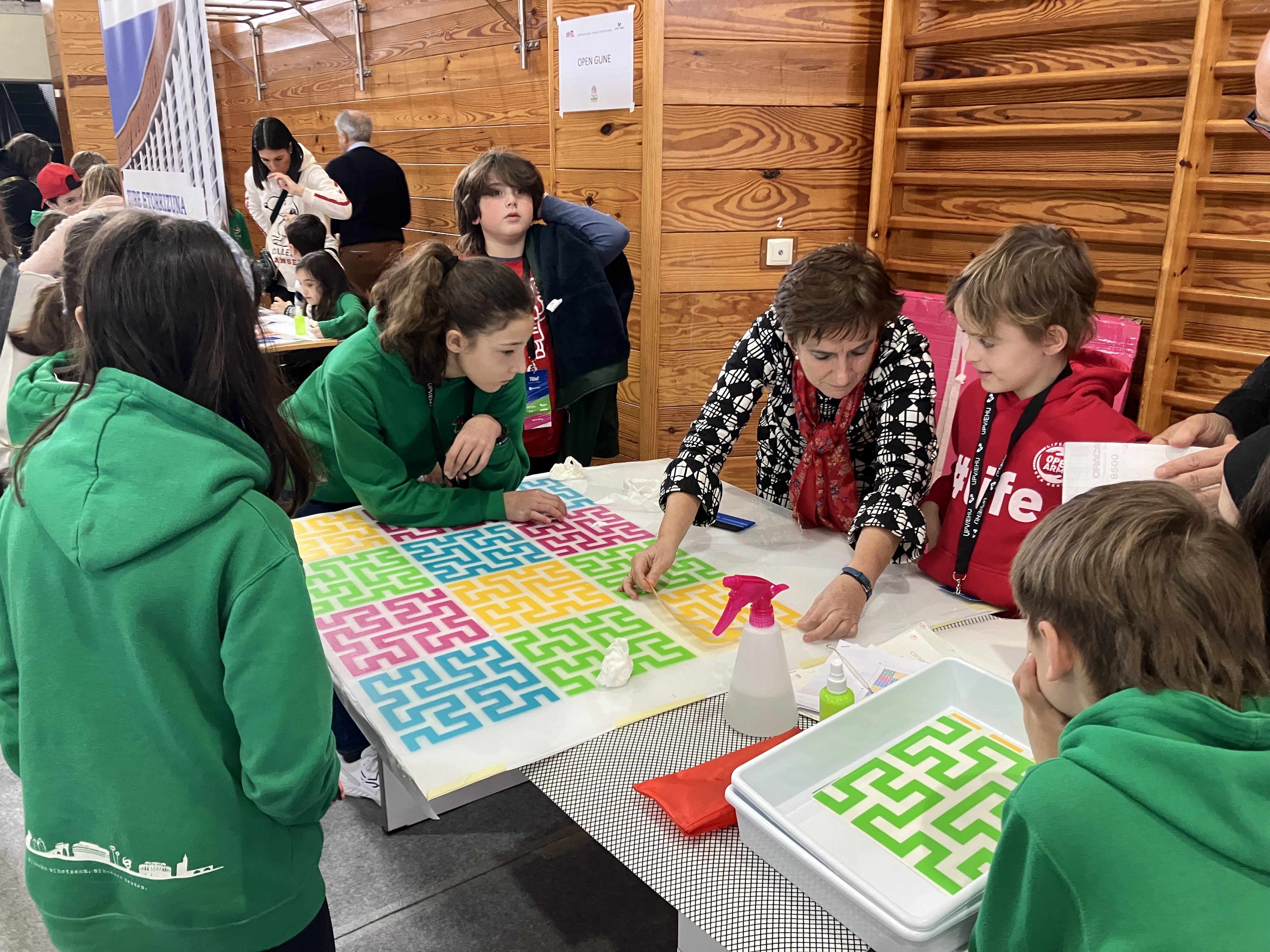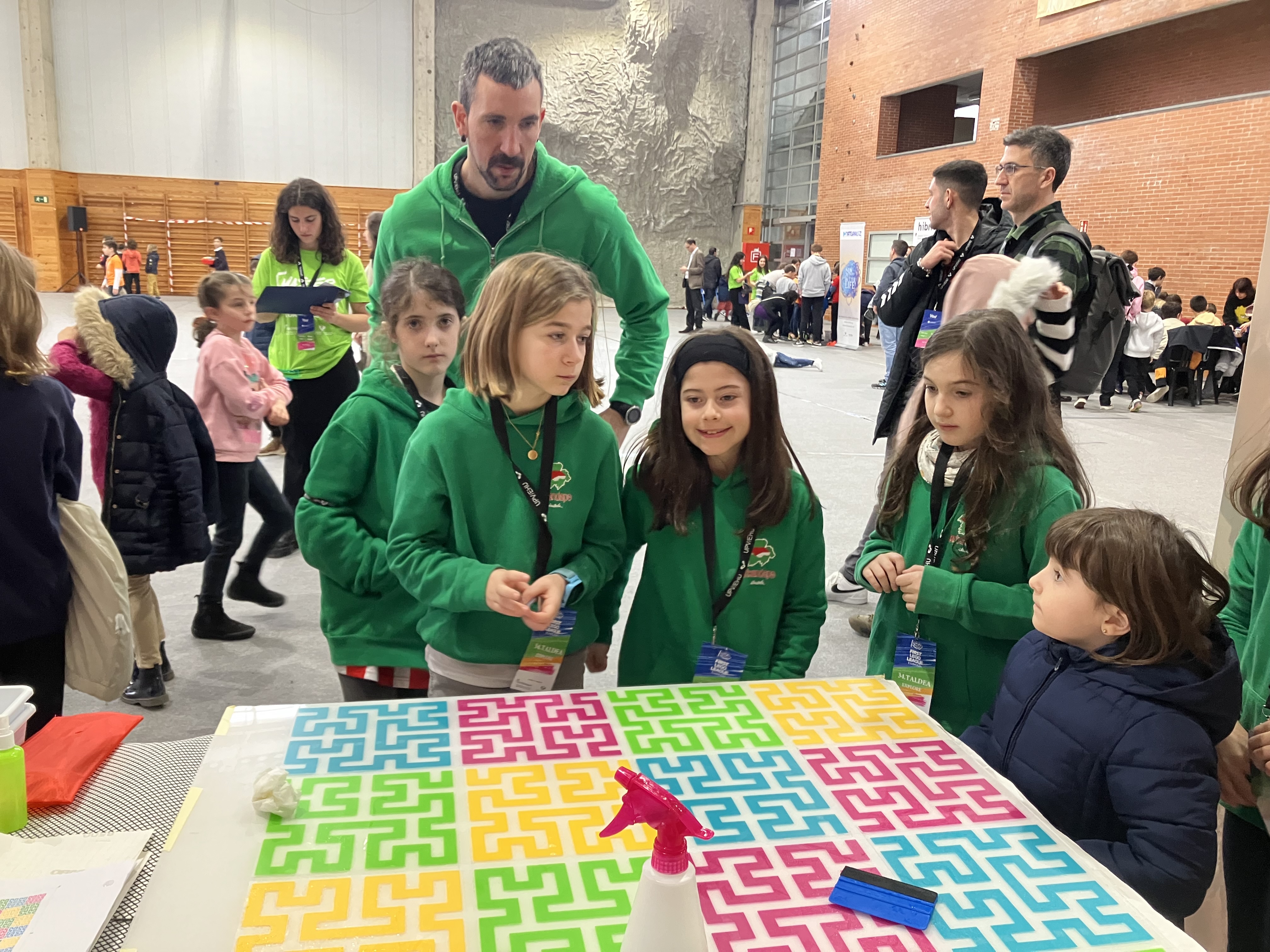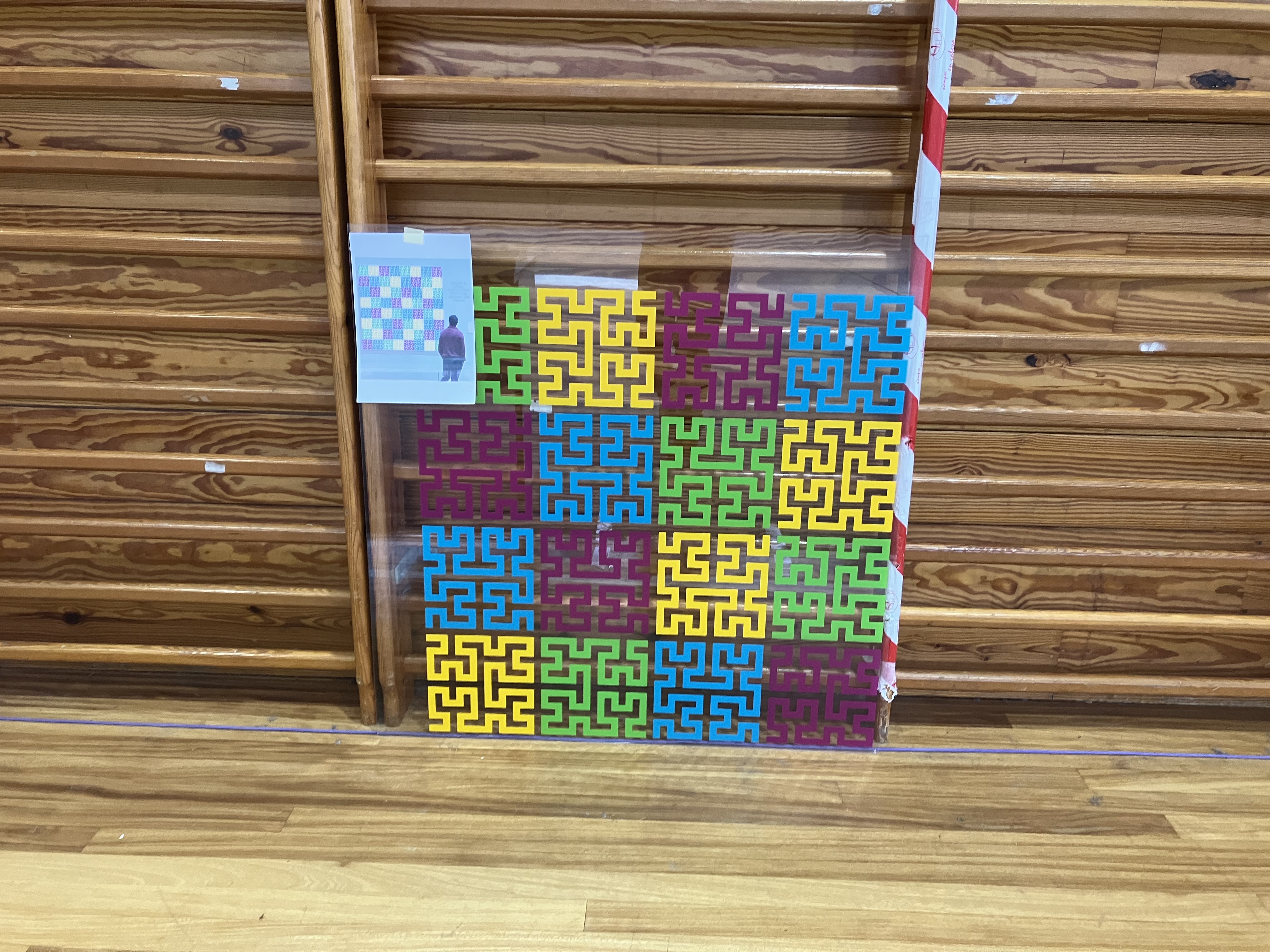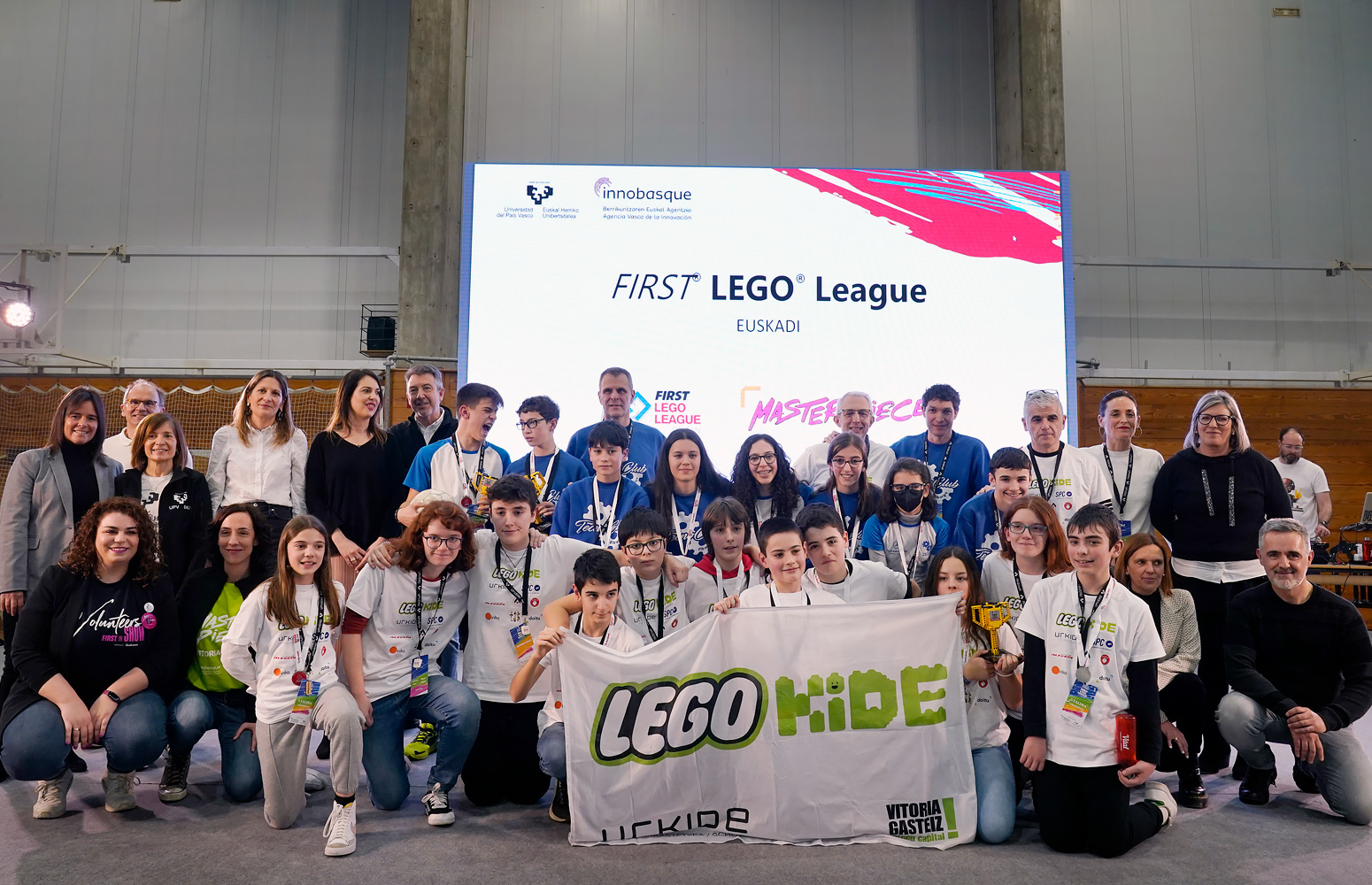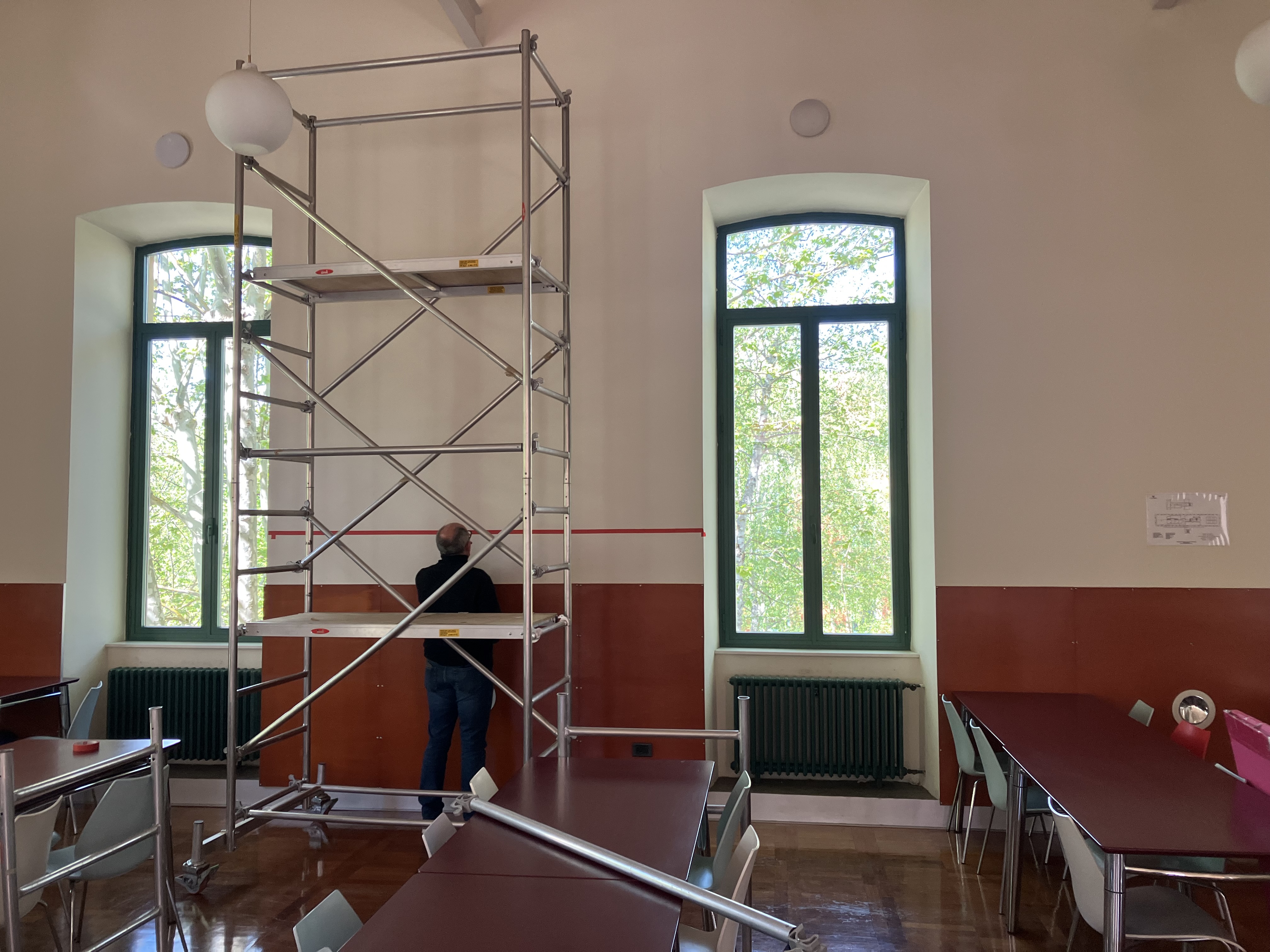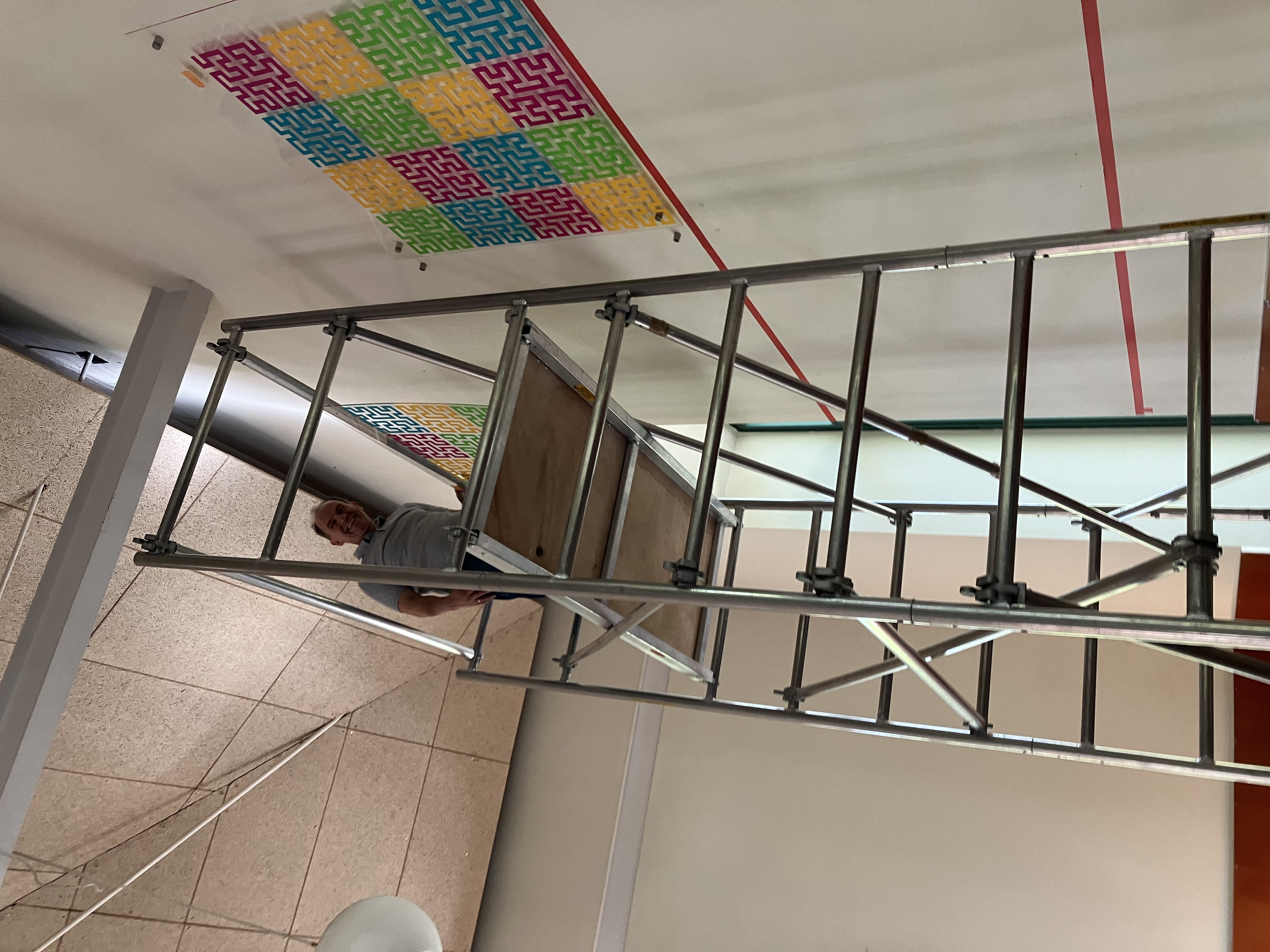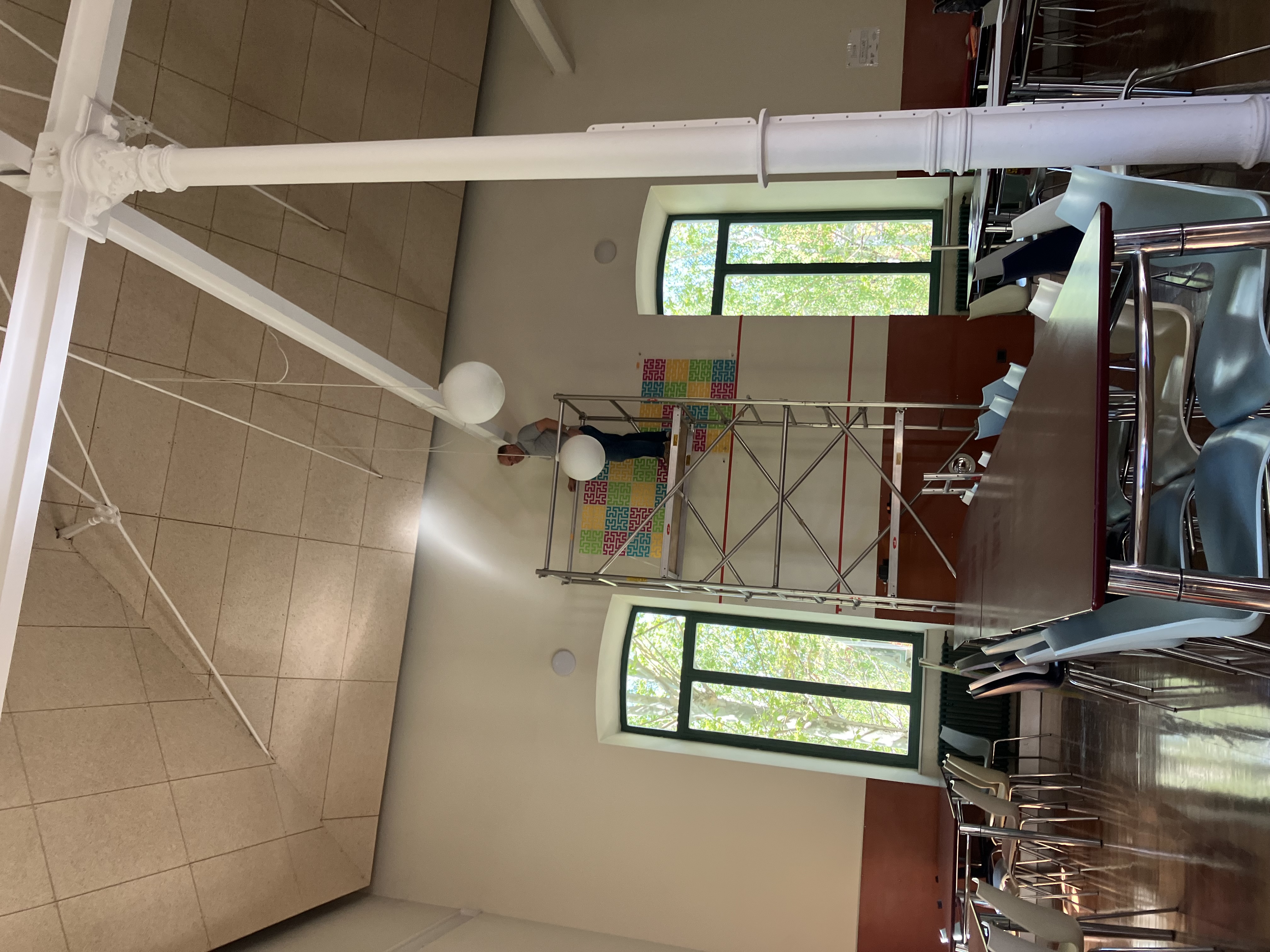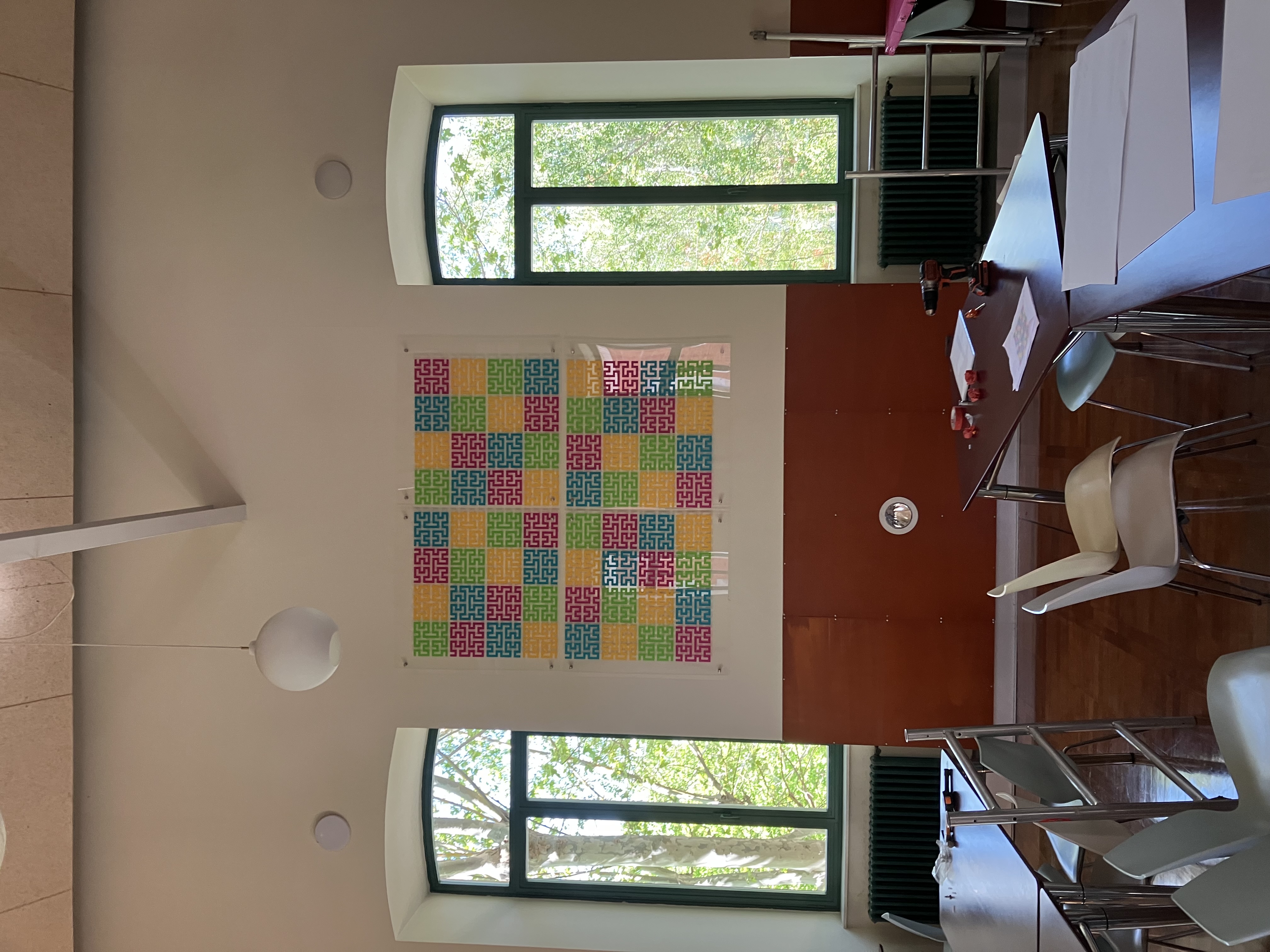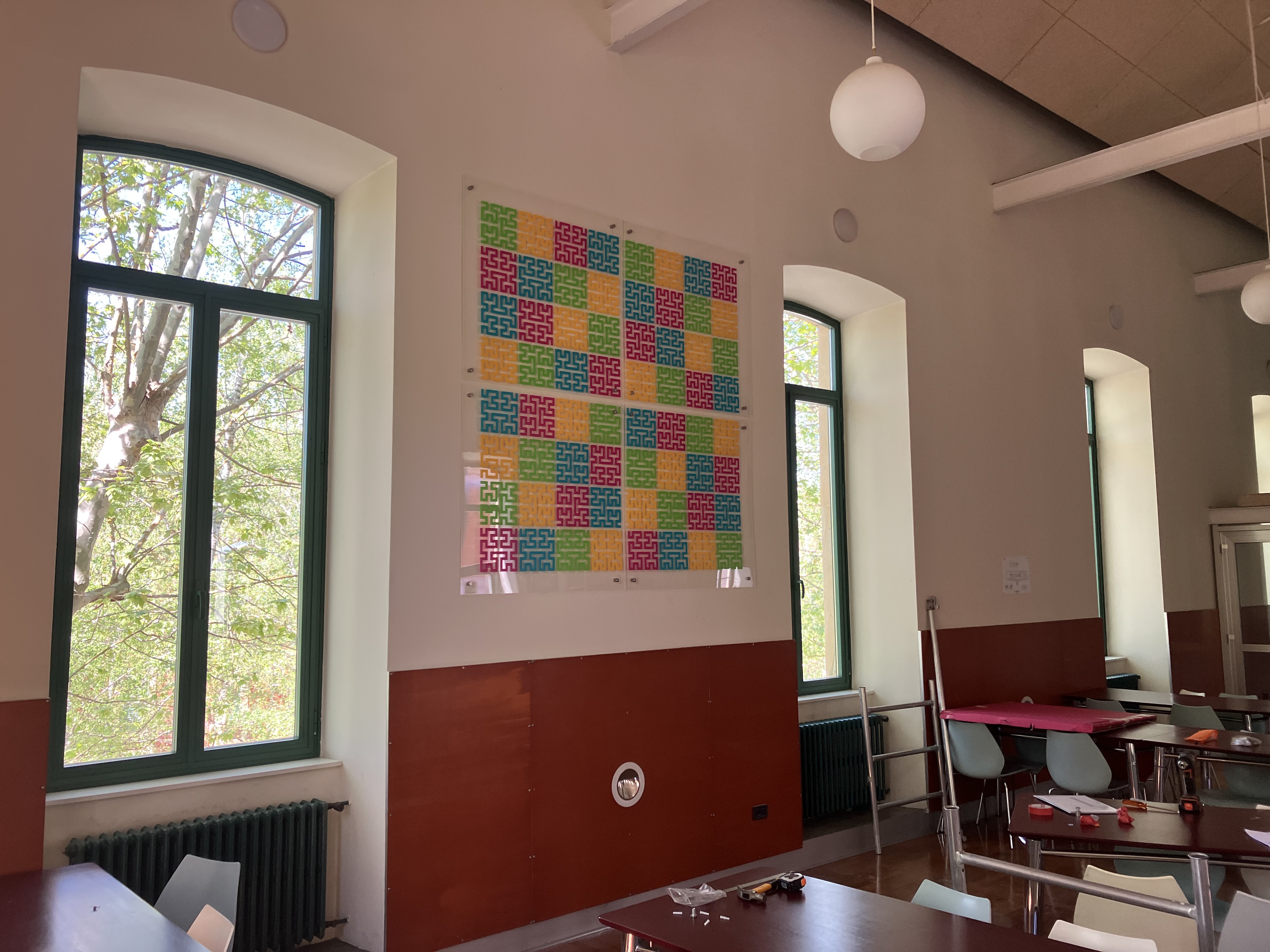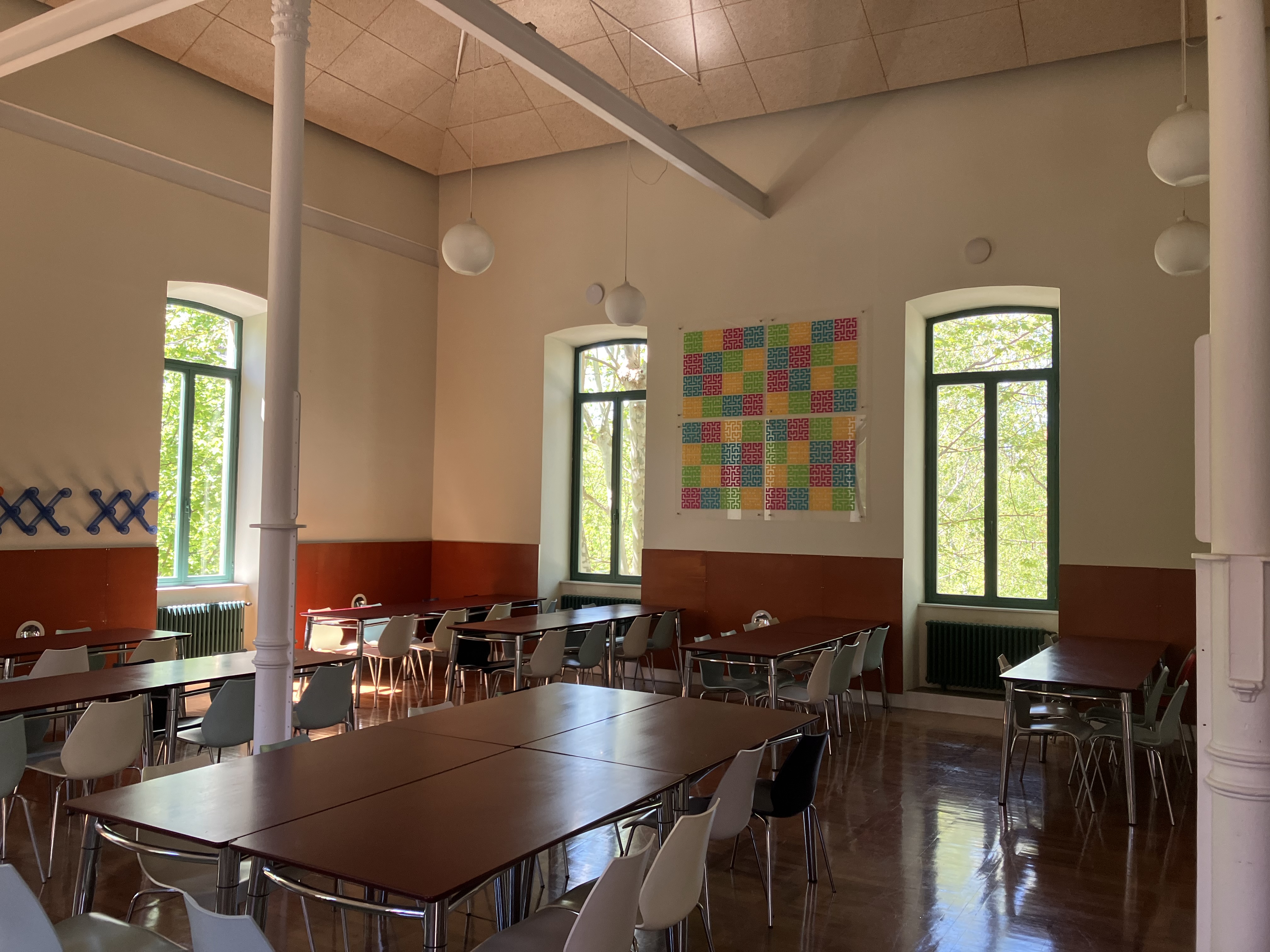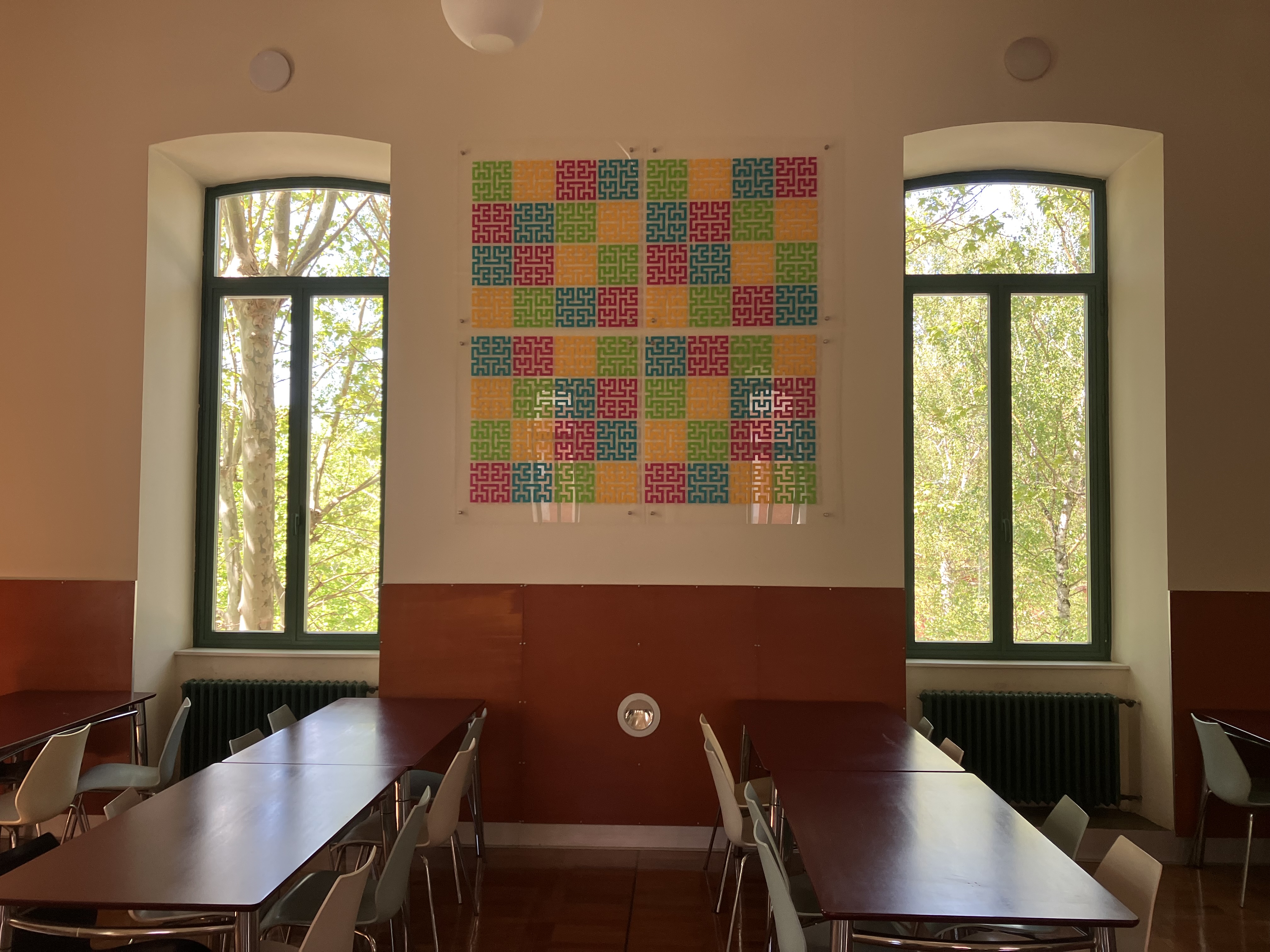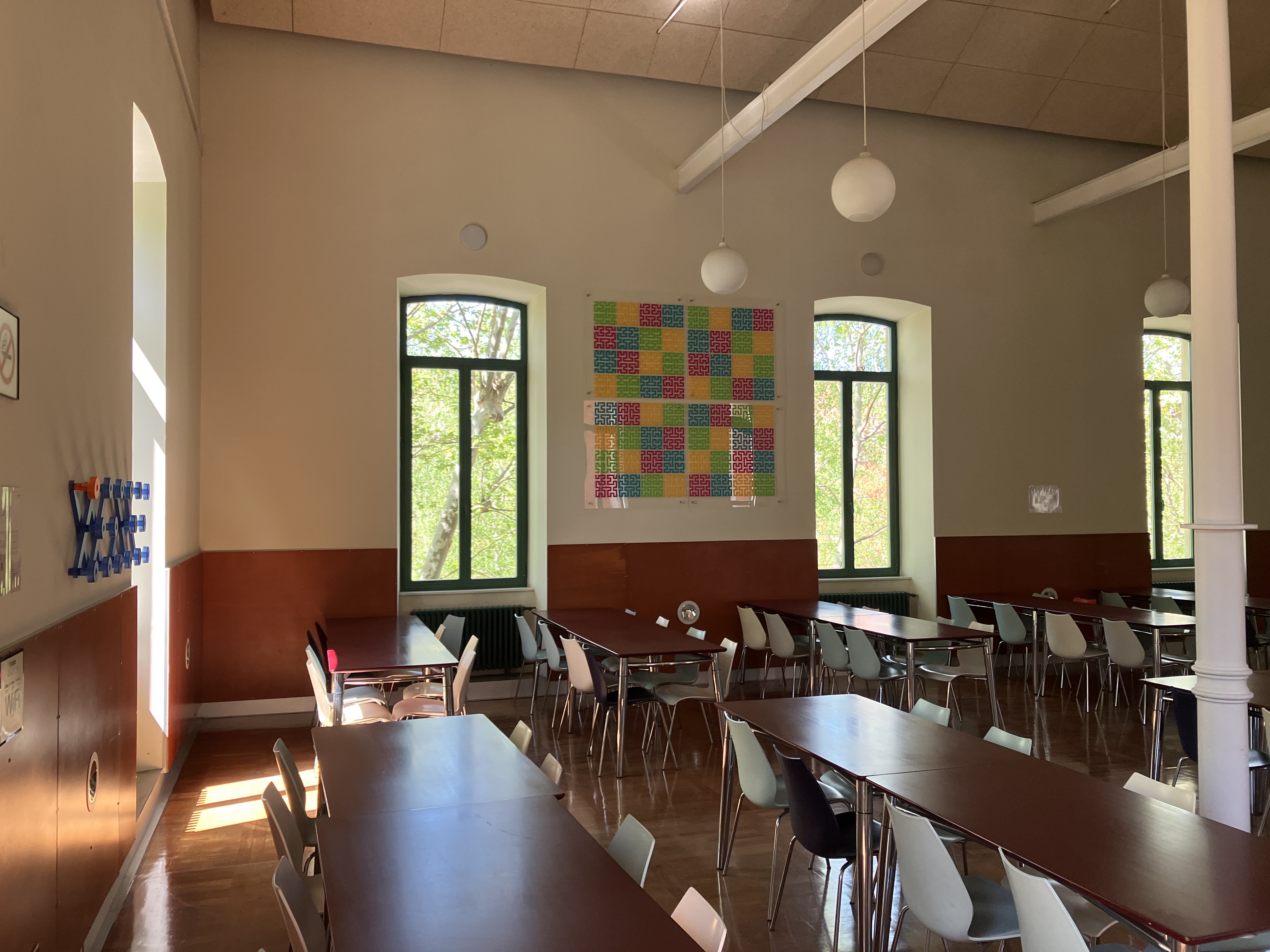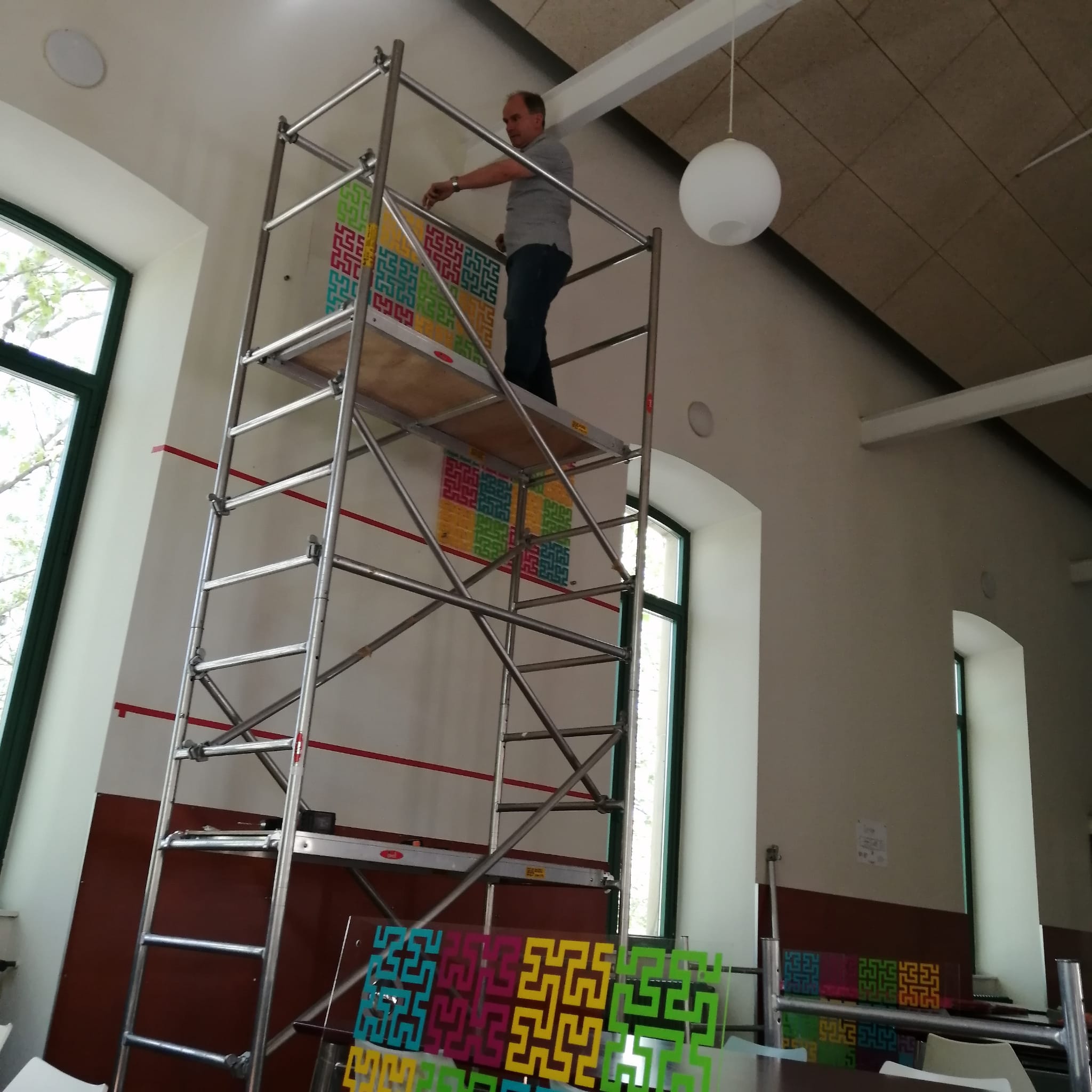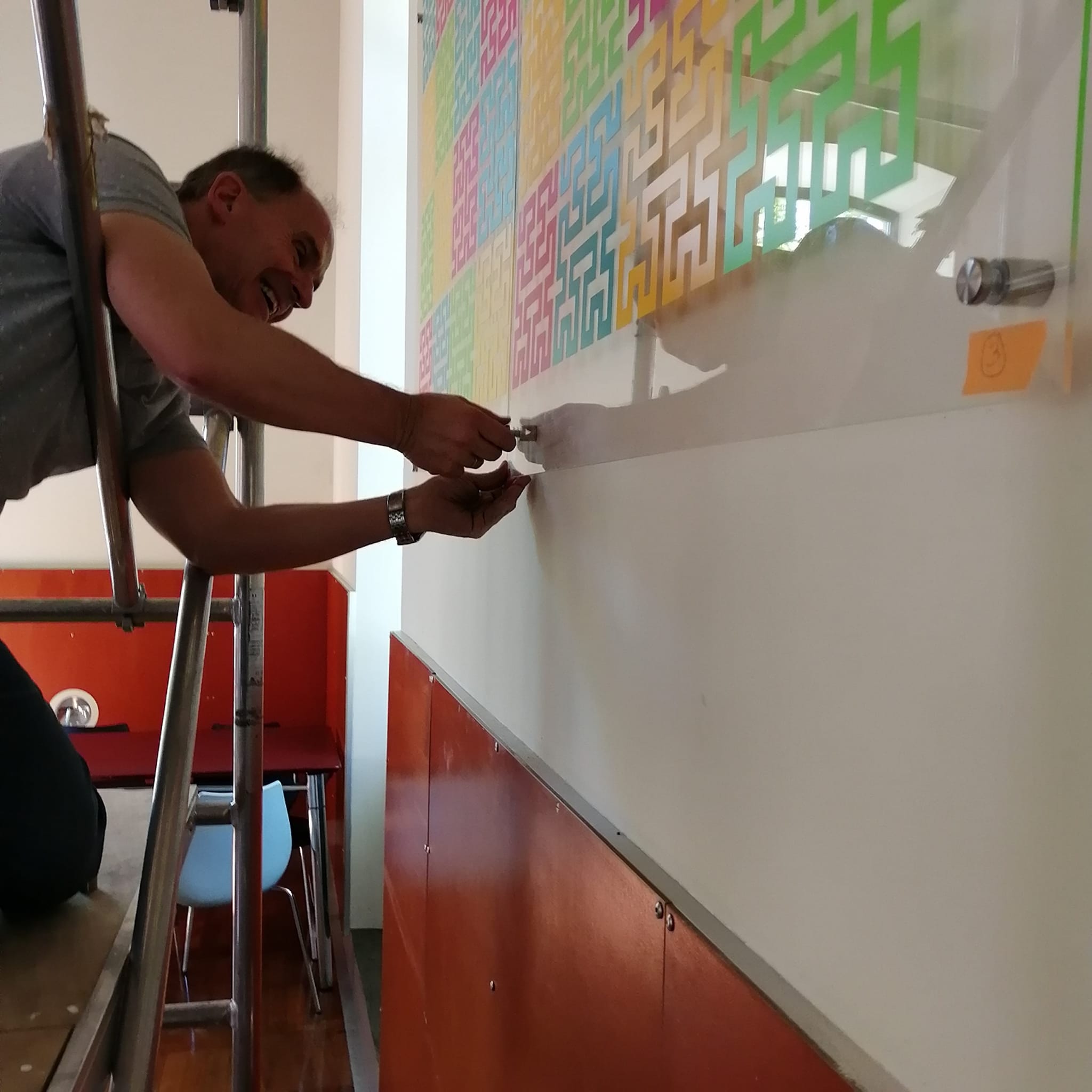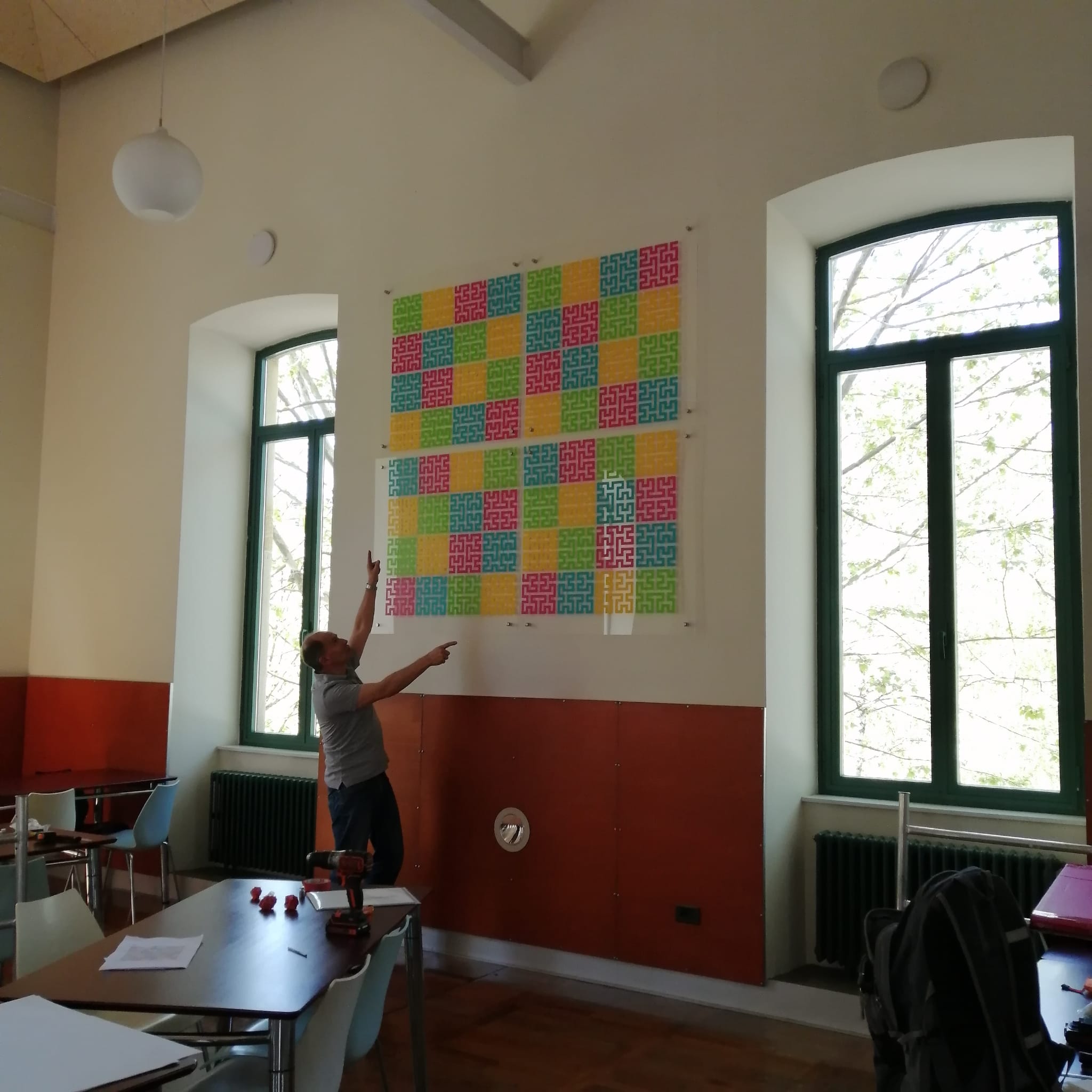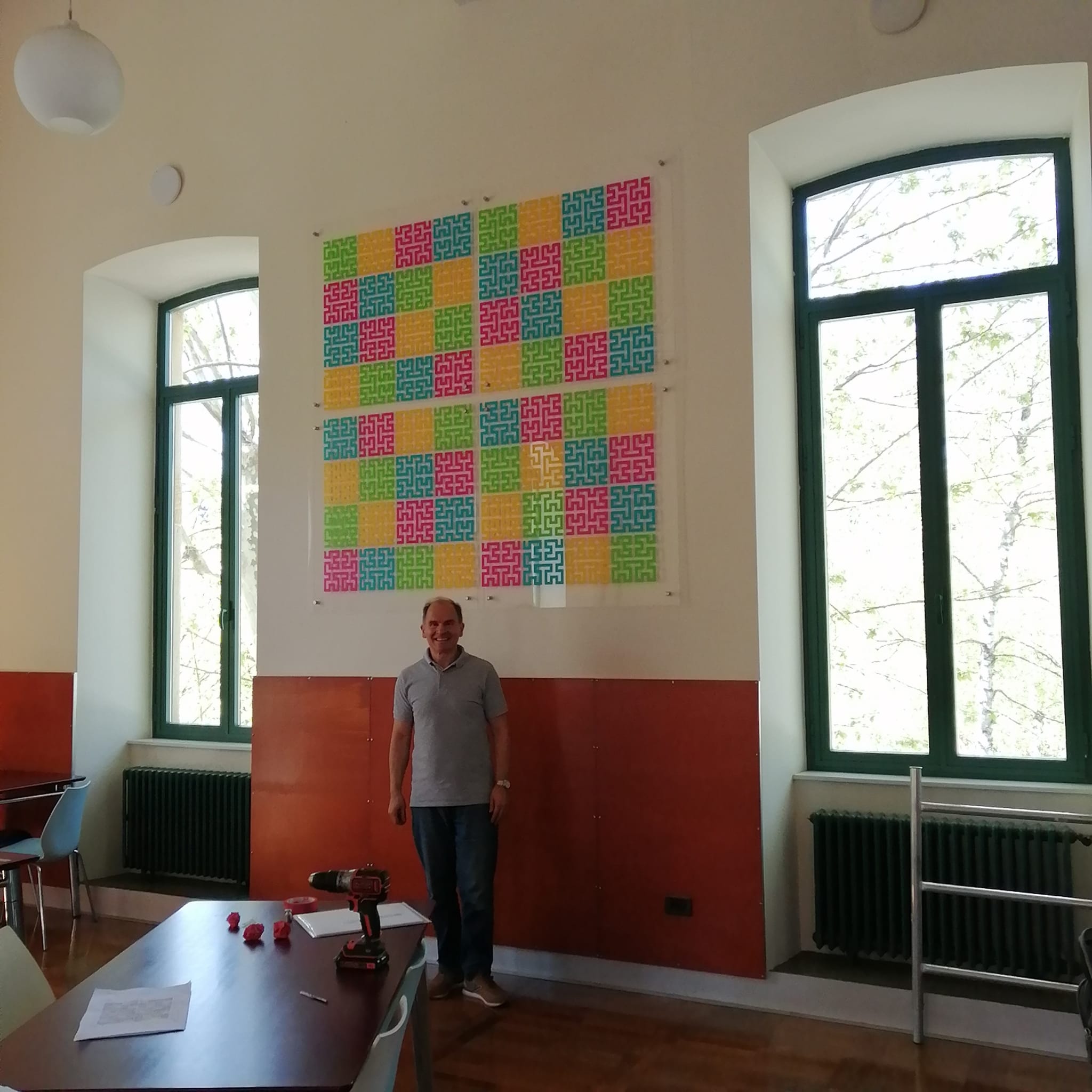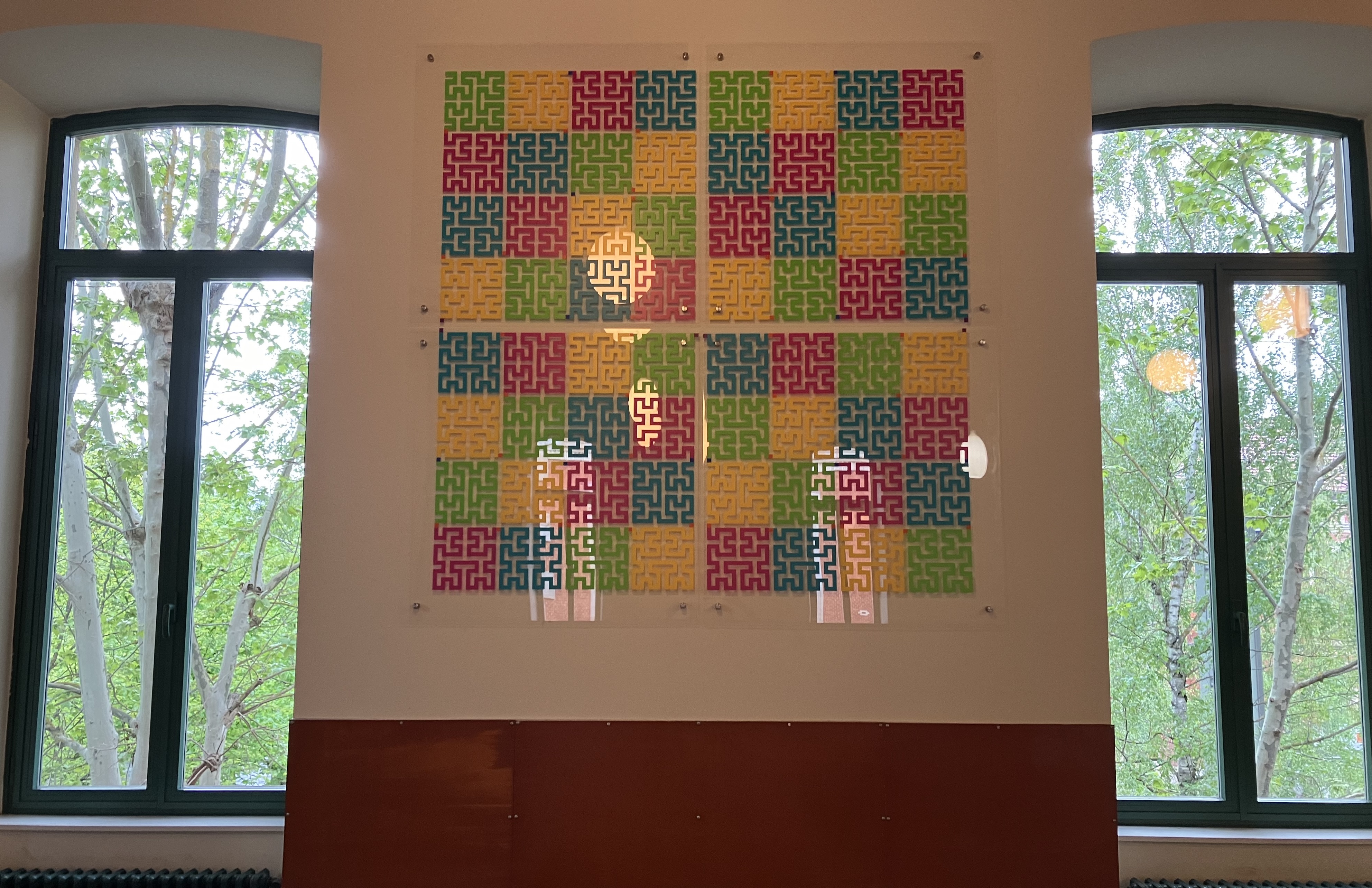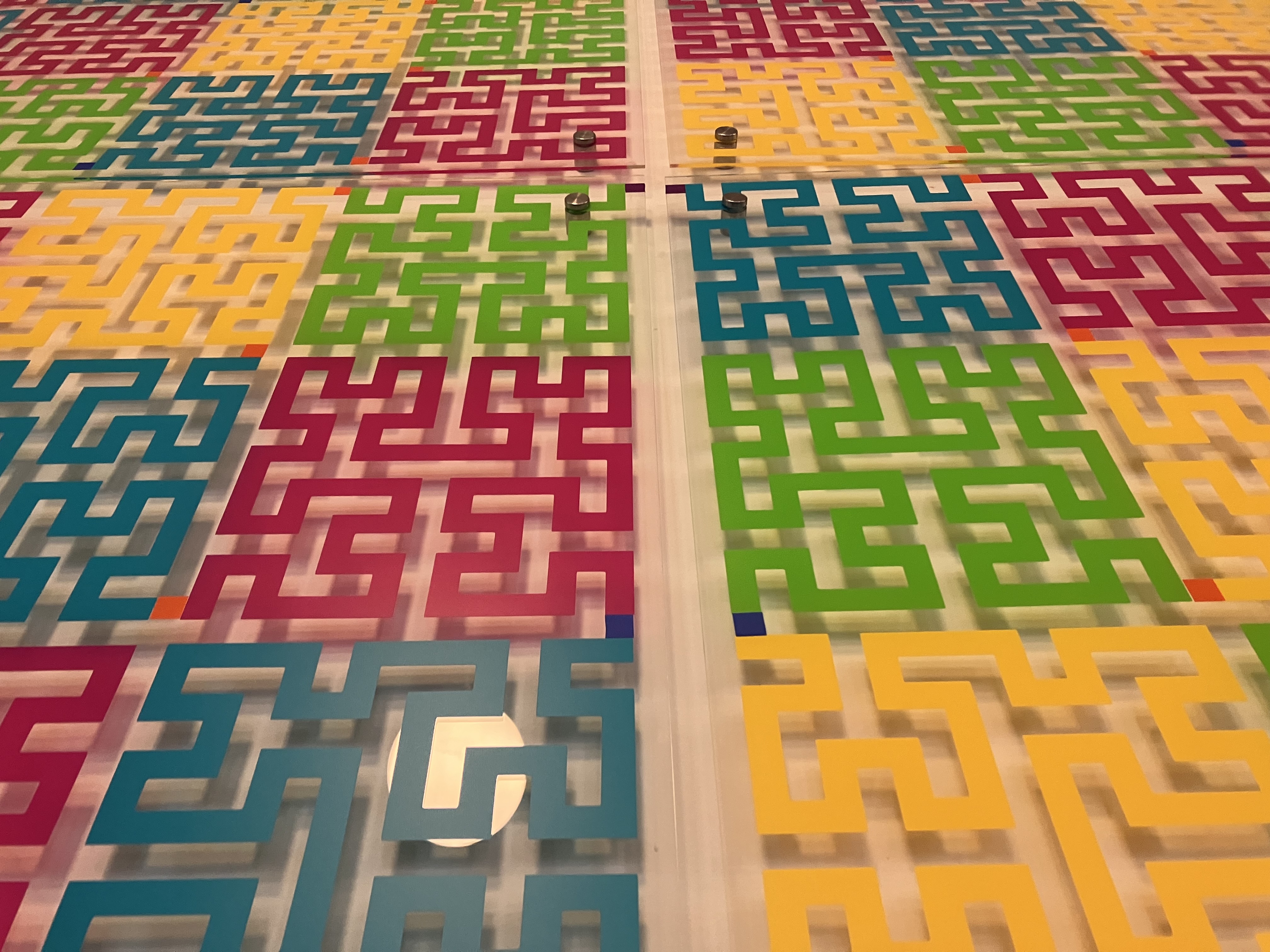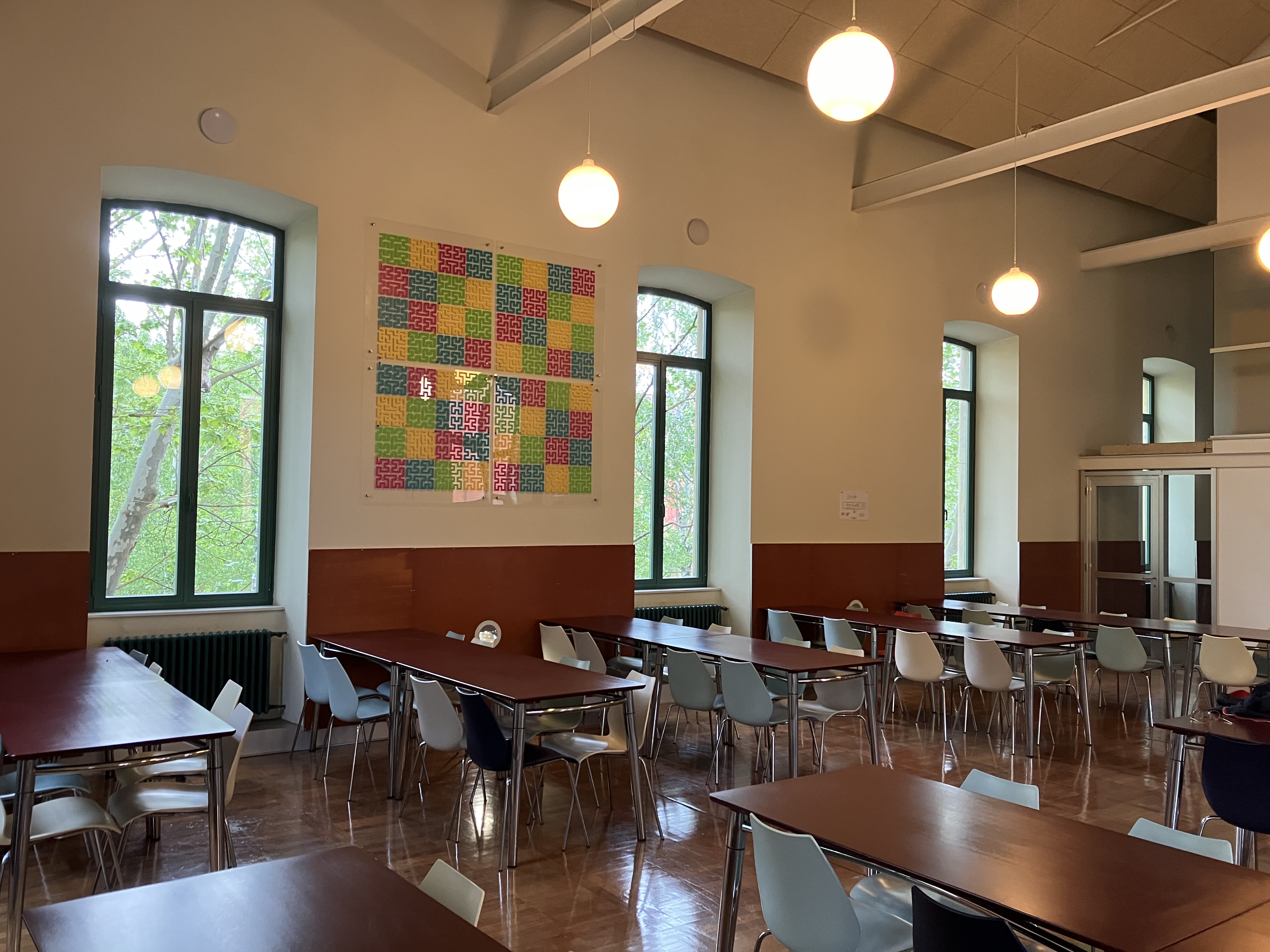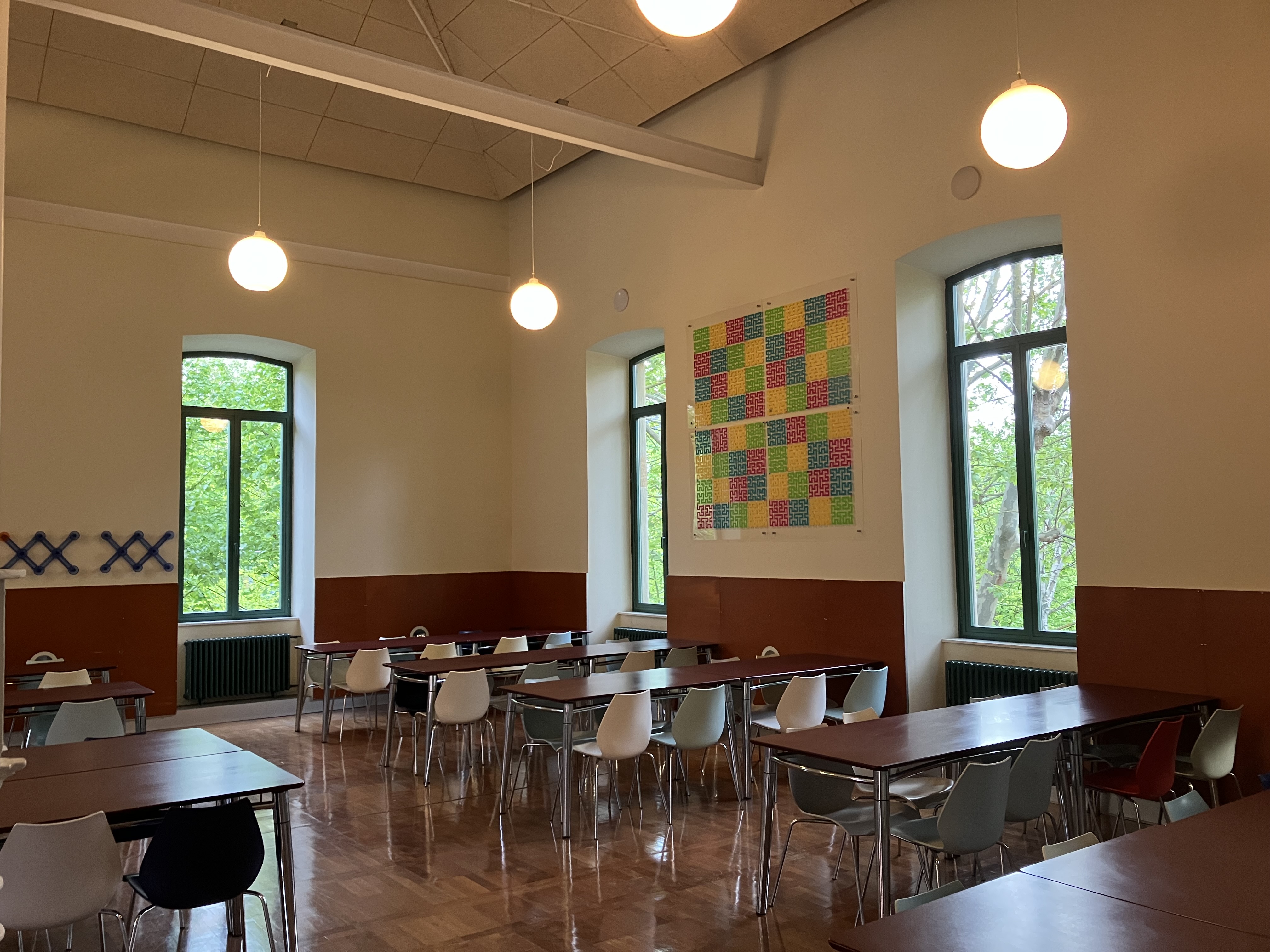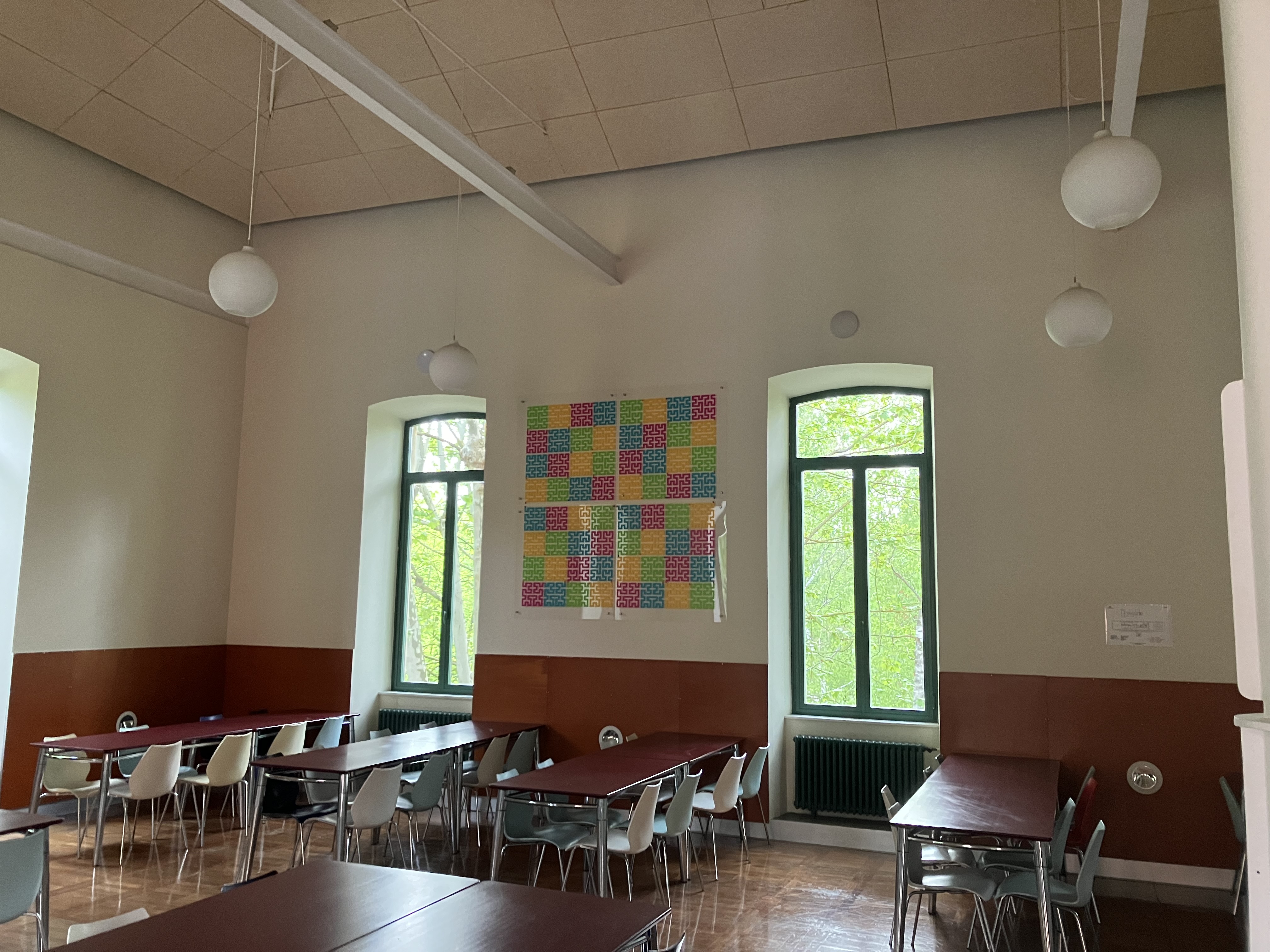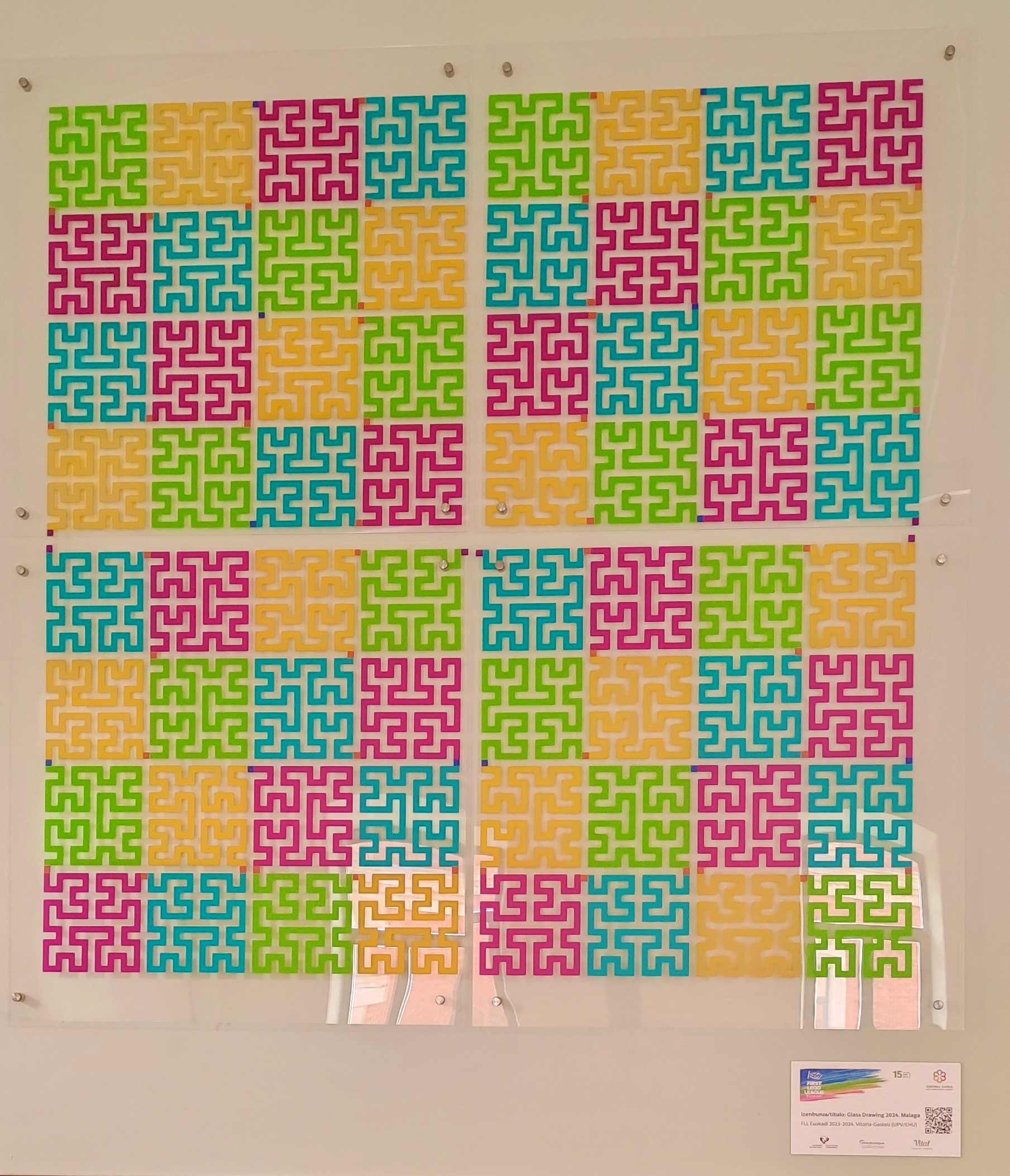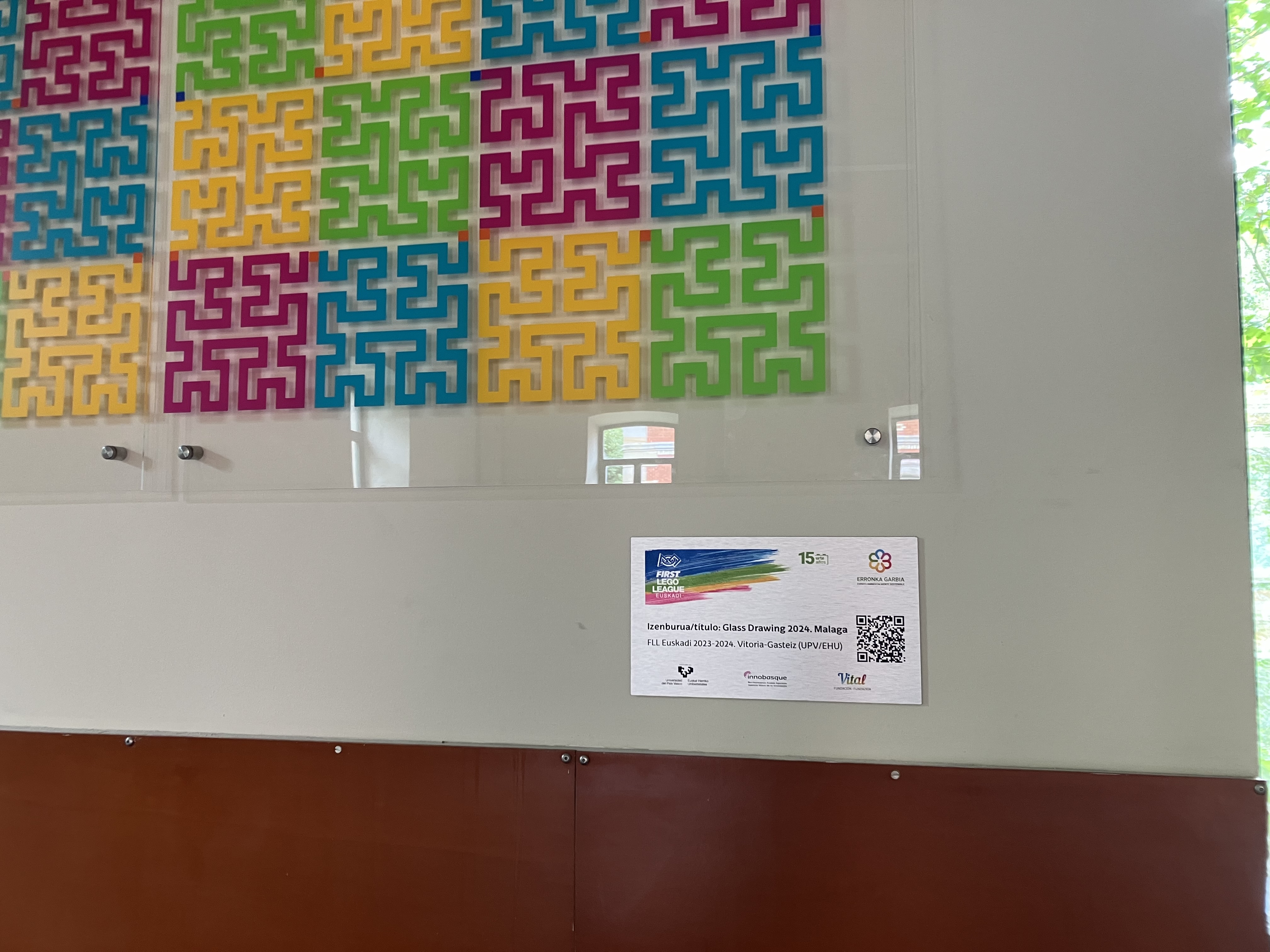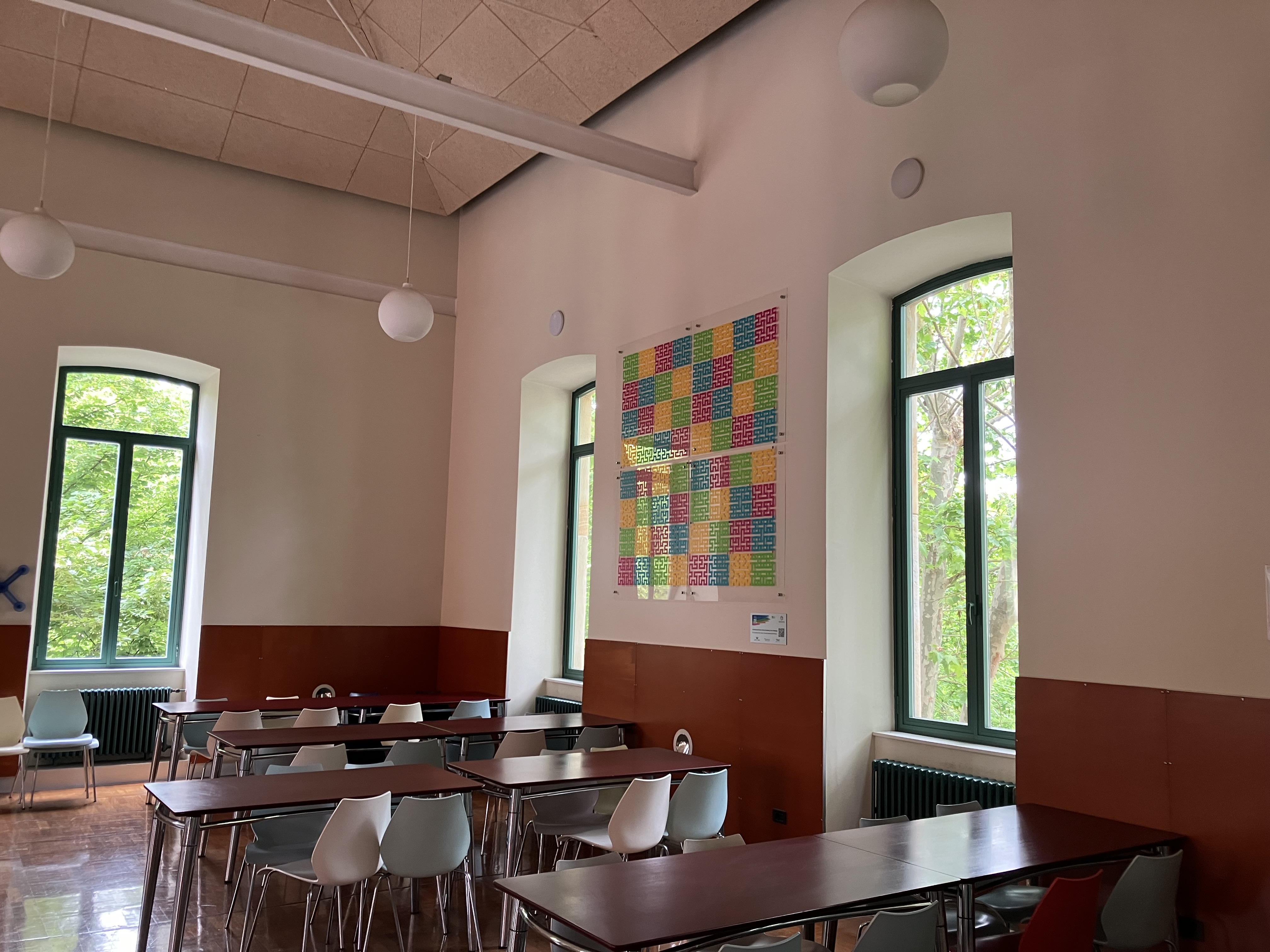Glass Drawing 2024.Malaga
1.- Data
- Title: Glass Drawing 2024.Malaga
- Art and Project: Olabe Basogain
- Collaborators: young participants of the FIRST LEGO League Araba (March 2, 2024)
- Technique: Translucent vinyl on glass
- Size: 2 m x 2 m (4 metacrilate 1x1)
- Date: April 2024
- Place: University Hall (Map)
2.- Description
The glass drawing 2024.Malaga represents a Hilbert curve of order 6. It is named after the German mathematician David Hilbert. It explores the mathematical idea of a continuous fractal space-filling curve. Unlike simpler curves that do not fill space, the Hilbert curve's purpose was to demonstrate the possibility of a two-dimensional curve to fill a whole area of space completely and continuously. This was a significant exploration into the field of dimensional mathematics and filled a conceptual gap in understanding dimensions and how they relate to the real-world.
The curve is constructed recursively, meaning it begins with a simple pattern that is repeatedly replaced with a more complex version of itself at each iteration or order.
The piece is composed of four panels of order five, which we call continents, each containing four curves of order four which we call countries, each containing four curves of order three, which we call provinces. The four continents are connected through three intercontinental bridges; in each continent the four countries are connected through three international bridges; and in each country, its four provinces are connected via three national bridges. The bridges are color-coded to provide a visual reference of the overall infrastructure. We also developed an iterative language in which odd-order curves (1,3,5) are called glasses (for their recognizable brim) and the even-order curves (2,4,6) are called jars (also for their brim). Each glass is created with four jars of lower level, and each jar is created with four glasses of lower level. These languages of compositionality (jars make glasses, and glasses make jars) in addition with their connectivity via three bridges (national, international, and intercontinental) provide the viewer with the tools to internalize in their own mind this complex figure.
The curve is viewed as a story with multiple protagonists and multiple relationships, allowing the symbolic representation of the image in a way that it is understood and remembered. Later, the story makes the image accessible in the mind, and the viewer can recreate it without external help. This artwork performs these three cognitive tasks with an innovative methodology that allows mental manipulations of complex curves. These ideas are intended to explore new cognitive and artistic experiences in museums and educational institutions.
A second level of cognitive innovation of this artwork takes advantage of the periodic structure of the Hilbert curve to implement a geometric study on color symmetry that we call the Magic Square. The concept of a Magic Square first originated in the ancient cultures of China, India, and Middle East, however, did not appear in the cultures of the Greeks, Babylonians, Egyptians, or Pre-Columbian Americans. In this artwork the four colors (red, yellow, green, and blue) are combined to create multiple simultaneous symmetries in rows, columns, diagonals, and nested clusters. We developed a text-based symmetry language that allows the viewer to decompose the vast number of symmetries with a basic pattern (PA-BE). Each letter represents an abstraction of a color and allows the viewer to accomplish the same three complex tasks of understanding, remembering, and recreating the piece of art without external help.
The combination of these two innovative ideas challenges many of the preconceived notions about the cognitive capabilities of schools’ students. According to the International Exam PISA school students have very limited cognitive capacities to represent and process symbols in their minds. Most students are only able to process systems with two or three numerical symbols combined with very simple arithmetic operations. For example, 95% of the school population of SPAIN only achieve cognitive competency in the lower levels (1-2-3-4) of the PISA Scale of competency.
To explore these ideas, we have created a hands-on workshop where participants, children and adults, learn the languages of image compositionality and color symmetries to learn and later recreate on their own the ideas of this artwork.


